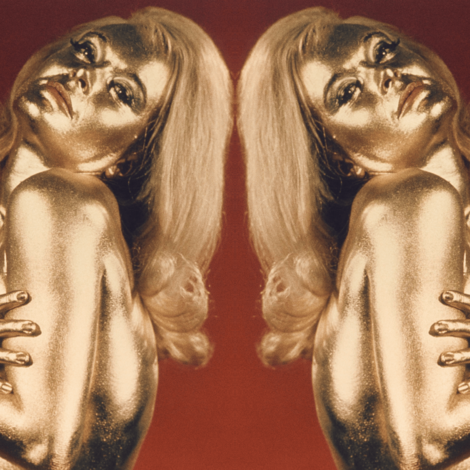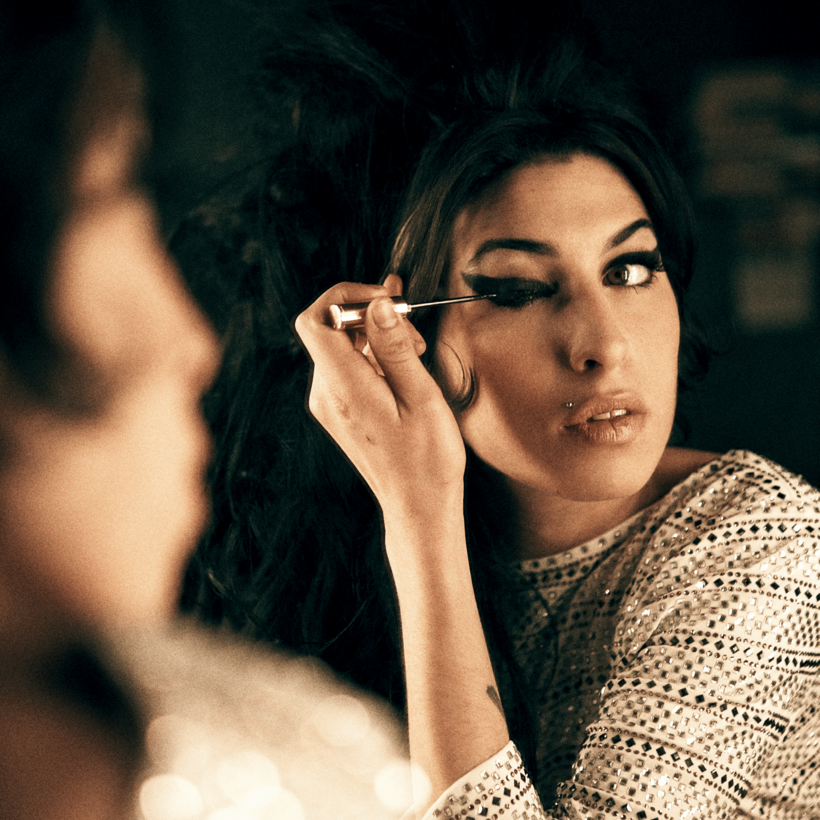In a small house in an unprepossessing North London suburb, 16-year-old Amy Winehouse was hanging out in her bedroom with her friends, goofing for a home video and sucking on lollipops.
It’s only a segment from the extraordinary Amy, Asif Kapadia’s 2015 award-winning documentary, but it captured early signs of her lively personality. As one friend said, “She was a North London Jewish girl with a lot of attitude.”
In 2011, at age 27, her body was discovered at her elegant apartment in a white-stuccoed, terraced building. Again, she was in her bedroom, but this time surrounded by vodka bottles, dead from alcohol poisoning.
In the intervening years, Winehouse had become one of the most celebrated, infamous, and intriguing women of her time. As the upcoming release of Sam Taylor-Johnson’s biopic, Back to Black, demonstrates, even the interest in the life and style of this tiny, sassy London girl with the soaring voice of a New York jazz diva remains as powerful as ever today. She developed a way of presenting herself that was instantly recognizable even before she opened that fabulous mouth. It was encapsulated in the tiny, fitted cocktail dresses with bone-crushingly tight bodices cut low to reveal her bra, finished with impossibly high-heeled pumps and a back-combed beehive that grew into a dazzling nest adorned with flowers, jewels, and birds.
The fashion world has always been intrigued with her, although she was no fashion follower. In February, Burberry creative director Daniel Lee used Winehouse’s voice as the soundscape for his recent show. Karl Lagerfeld, in 2008, used such Winehousian touches as teased hair and an exaggerated cat’s-eye in a collection he said was inspired by her. Jean Paul Gaultier’s 2012 couture show was a deeper dive into her look, imitating the singer’s minuscule torso using corsets from Mr. Pearl and expounding on her love of American sportswear through baseball jackets and short-sleeved polo tops.
In the Amy documentary, Libertines singer Pete Doherty (who was, with Kate Moss on his arm and a trilby on his head, something of a style renegade himself) describes the Camden club scene where Winehouse came of age. “The best-dressed and the coolest were born to lose, really,” he pronounced. The comment could apply not only to Winehouse’s tragic end but to a whole roster of talent whose style lives on but who didn’t make old bones—Marilyn Monroe, Jimi Hendrix, the Rolling Stones’ Brian Jones, and James Dean.
Winehouse was no fashion plate but she had style, oodles of it. And like many originals, she found her look early and stuck to it. That look channeled many of the singers she admired, but she made it entirely her own. The little black dress, so often worn by her jazz heroines like Dinah Washington and Sarah Vaughan, had its elegance stripped away as it became shorter, tighter, and more bosomy to reflect her own, more raw sexuality. The bouffant hair of 60s girl groups such as the Supremes and the Chiffons, whose repetitive choruses were echoed in the incantatory “No, no, no,” refrain of Winehouse’s hit 2006 single “Rehab,” became the tangled updo.

But, over the years, the entire thing got dirtier—her eyeliner morphed from a traditional single black sweep into an exaggerated, heavy cat’s-eye, which, in her later years, was too often smudged across her face by tears, trauma, and excess. The clothing became rumpled and torn. Yet even in this sorry state she never lost the power to captivate and intrigue.
At the root of Winehouse’s look were not only the American jazz singers she admired but something uniquely London: an unpredictable, inventive attitude that was also grounded in tradition. It seemed offhand, but it, like so many other uniforms of style tribes—the punks, mods, and rockers—was actually calculated.
Winehouse’s look still resonates, because she cared nothing about what others thought about her clothes and confidently owned her way of dressing. For years she worked with stylist Naomi Parry, but not in the way today’s stars work with stylists. There were no truckloads of designer clothing called in for public appearances, no lucrative paid collaborations (although Winehouse did design a few collections for her much-loved Fred Perry), no guards arriving with velvet-lined jewel boxes full of diamonds to be worn for the evening and then whisked away. Instead, they trawled vintage shops and occasionally indulged in a designer moment, like when she wore the yellow Preen dress to collect her 2007 Brit Award.
As time passed, the toll of her bulimia and drug abuse gave Winehouse’s body the look of a malnourished child. Her fashion choices increasingly reflected her obsession with her weight. The shorts that showed off her skinny legs became buttock-grazing and slung even lower on the hip bones. Her tops slithered off her body. Her sweaters were minuscule. She threaded scarves through her belt loops to hold up her pants, and the tattoos traced around her body became so dense that, at times, her arms resembled comic books.
In Back to Black, Marisa Abela gives a barnstorming performance, capturing that young, mouthy Amy through her tragic and seemingly avoidable decline. While Abela is not the same shape as the bulimic singer, costume designer P.C. Williams’ outfits contribute to the accuracy of the portrait, digging into the Fred Perry archives and sourcing pieces from vintage shops.
“There’s a challenge that comes with designing costumes for a person who is so thoroughly documented,” says Williams. For Winehouse’s stage ensembles, Williams made more filmic versions of things Winehouse actually wore, while for other scenes she, like Winehouse, turned to the vintage stores to re-create outfits. “That’s the one good thing about being over-documented,” says Williams.
Meanwhile, even from the grave, Winehouse’s legacy remains tumultuous. Her father, Mitch Winehouse, is threatening a legal case against Naomi Parry and another friend of his daughter’s, Catriona Gourlay, for selling some of Amy’s clothing at auction. The two women earned roughly $244,000 for a bamboo-print dress Winehouse wore at her last, catastrophic performance, in Belgrade, and around $201,000 for a Moschino purse she took to the Brit Awards, according to the Daily Mail. It seems there’s still money to be made from Winehouse’s clothes, as well as from her music. “We have a deeper appreciation for her style now that I can assume she ever felt then,” says Williams. “She was a true rare diamond.”
Alexandra Shulman, the longest-serving editor of British Vogue, is a columnist at The Mail on Sunday and the author of the memoir Clothes … and Other Things That Matter





